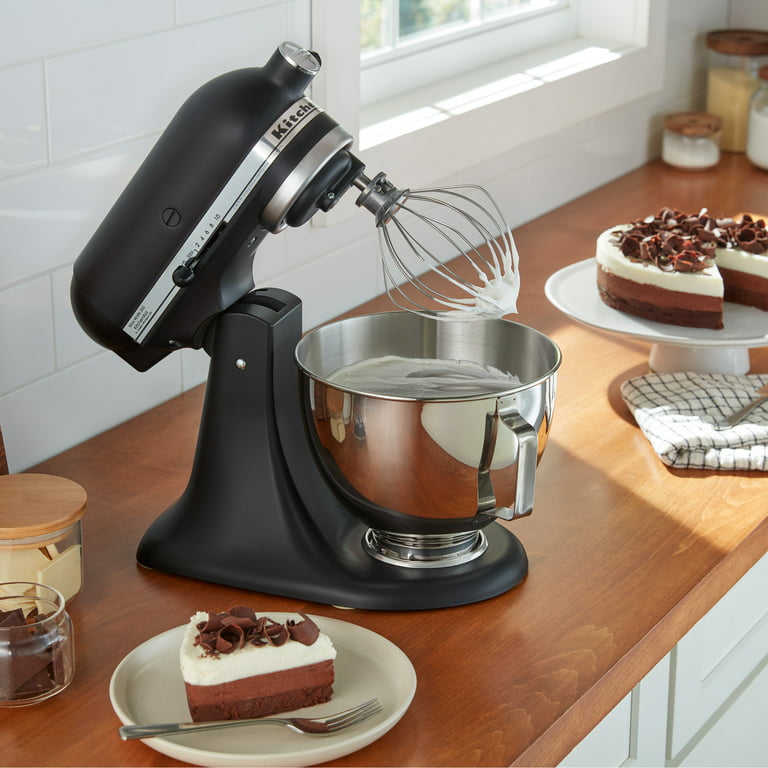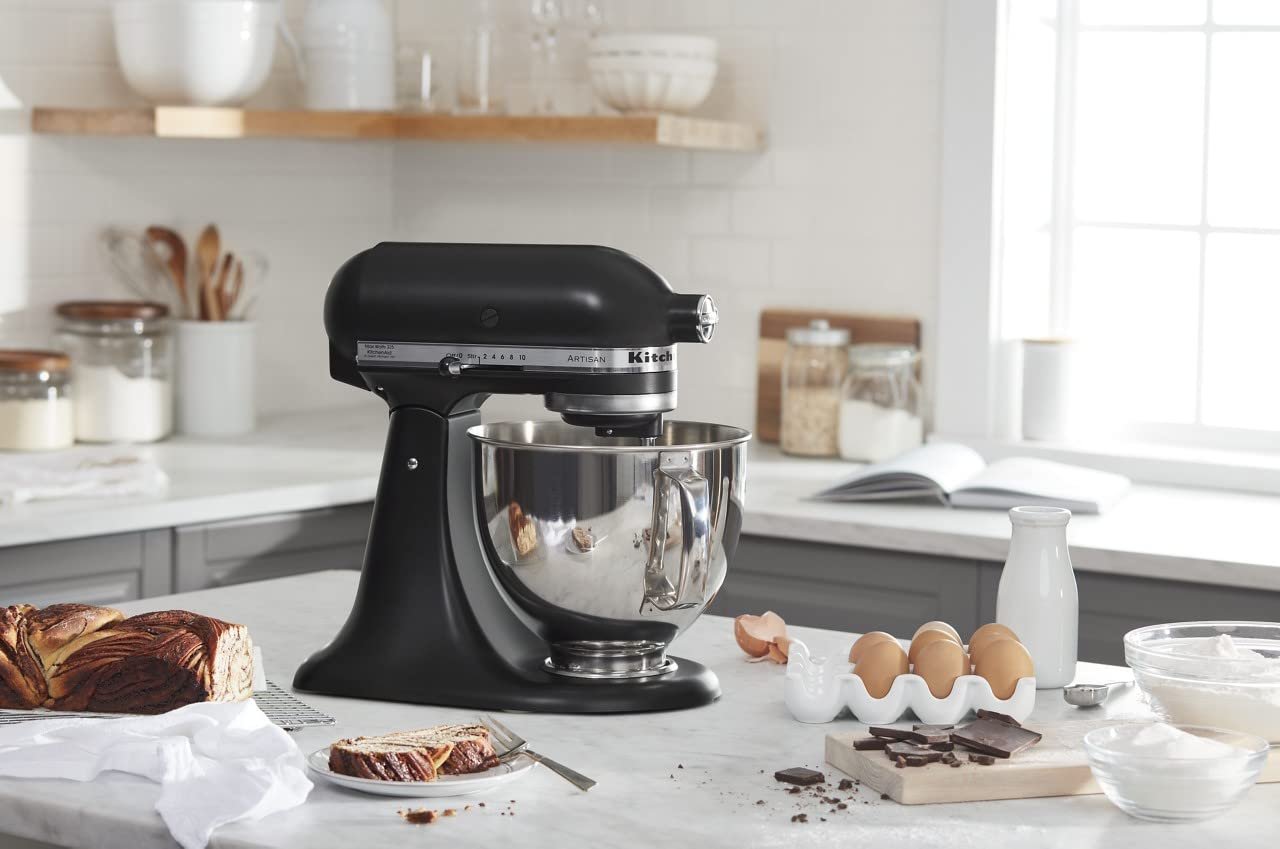Welcome to TheKitchenApplianceDad.com, where we delve into the nitty-gritty of kitchen appliances to make your buying decisions easier and your cooking experiences better. Today, we’re going to talk about a kitchen staple loved by home cooks and professional chefs alike – the KitchenAid mixer. But we’re not just talking about how they can whip up a mean meringue or knead dough to perfection; we’re focusing on something a bit more practical – their weight.
KitchenAid mixers are substantial appliances, and their heft is often a testament to their durability and quality. But just how heavy are they? If you’re considering purchasing one or planning to move your heavy-duty friend around, knowing their weight is crucial. Let’s compare the different models to help you understand what you might be lifting or making room for on your countertop.
Classic KitchenAid Mixers
The Classic Series is often the entry point for many into the world of KitchenAid mixers. These models are designed to handle most baking needs without too much fuss.
- KitchenAid Classic (K45SS): The Classic model weighs in at about 25 pounds (11.3 kg). Its 4.5-quart bowl is large enough for most tasks, and the weight ensures stability during operation.

Artisan KitchenAid Mixers
Taking a step up, the Artisan Series is where you start to see a wider range of colors and a slight increase in power.
- KitchenAid Artisan (KSM150PS): The popular Artisan model is a bit heavier than the Classic, at 26 pounds (11.8 kg). It boasts a 5-quart bowl and comes in a variety of colors to match any kitchen decor.
- KitchenAid Artisan Mini (KSM3311X): If space is at a premium, the Artisan Mini might be for you. It’s lighter than its bigger siblings, weighing 18 pounds (8.2 kg), and has a 3.5-quart bowl.
Professional KitchenAid Mixers
For those who need a bit more oomph for heavy doughs or larger batches, the Professional Series is where it’s at.
- KitchenAid Professional 5 Plus (KV25G0X): This model tips the scales at a heftier 30 pounds (13.6 kg). It has a 5-quart bowl and a more powerful motor to handle tougher tasks.
- KitchenAid Professional 600 (KP26M1X): The Professional 600 is one of the heavier models at around 31 pounds (14 kg). It has a substantial 6-quart bowl and is designed for serious bakers.
- KitchenAid Pro Line Series 7-Quart Bowl-Lift Stand Mixer (KSM7586P): The Pro Line is the heavyweight champion of the KitchenAid family, weighing in at 32 pounds (14.5 kg). The 7-quart bowl is perfect for large batches, and the mixer’s power can tackle virtually any job.
KitchenAid Commercial Mixers
For commercial environments or the home cook who demands the absolute best, KitchenAid offers commercial-grade mixers.
- KitchenAid Commercial Series 8-Quart Bowl-Lift Stand Mixer (KSMC895): Ready for the busiest of kitchens, the Commercial Series mixer weighs 29 pounds (13.1 kg) and is built to run longer and handle more frequent use.
What Influences the Weight of KitchenAid Mixers?
The weight of a KitchenAid mixer is influenced by several factors:
- Bowl Size: Larger bowls are typically made of heavier materials and contribute to the overall weight.
- Construction: KitchenAid mixers have a metal construction for durability, which adds to the weight. The heavier the construction, the more stable the mixer, especially during intensive tasks.
- Motor Power: More powerful motors are heavier. As you move up the series, the motors get more robust and, consequently, the mixers get heavier.
- Size and Dimensions: The physical size of the mixer also plays a role. Larger models with more capacity are naturally heavier.
How to Manage the Weight of Your KitchenAid Mixer
Now that we know how much these mixers weigh, let’s talk about managing that weight in your kitchen.
- Permanent Countertop Placement: If you have the counter space, find a permanent home for your KitchenAid mixer. This eliminates the need to move it around.
- Sliding Mats: There are mats designed to go under appliances like mixers that allow you to slide them out when in use and back when you’re finished.
- Storage Solutions: Some kitchen cabinets have shelves that swing out and allow you to lift the mixer with less effort. If you’re designing a kitchen or looking for a major renovation, consider these options.
- Lift Assist: There are also lift-assist mechanisms that you can install in lower cabinets that bring the mixer up to counter level when needed.
Considerations Before Purchasing a KitchenAid Mixer
Before you bring a KitchenAid mixer into your home, here are a few things to keep in mind:
- Weight vs. Usage: Consider how often you’ll be using the mixer. If it’s a daily tool, you’ll want to ensure it’s easily accessible.
- Storage Space: Assess your kitchen’s storage solutions. Can your shelves or cabinets handle the weight if you’re not keeping it on the countertop?
- Portability: If you plan to take your mixer to events or move it around often, a lighter model might be more practical.
- Capacity Needs: Think about what you’ll be making. If you’re regularly making large batches of bread or cookies, a heavier, more powerful mixer might be worth the extra weight.
- Budget: Typically, the heavier and more feature-rich the mixer, the higher the price. Make sure you choose one that meets both your weight handling ability and your budget.
How to Choose the Right KitchenAid Mixer for You
Choosing the right KitchenAid mixer is about balancing your needs with the practical aspects of handling the appliance. Here’s a quick guide:
- For Occasional Baking: If you bake occasionally and in smaller quantities, the Classic or Artisan Mini might be perfect for you.
- For Regular Home Baking: The Artisan series strikes a good balance between weight and functionality for those who bake regularly.
- For Frequent, Large Batch Baking: If you’re a frequent baker and need the extra capacity, go for the Professional 600 or the Pro Line Series.
- For Commercial Use or the Serious Home Chef: The KitchenAid Commercial Series will provide the durability and power needed for heavy, frequent use.
Key Takeaways
- KitchenAid Mixer Weights: Ranges from 18 pounds for the Artisan Mini to 32 pounds for the Pro Line Series.
- Bowl Sizes and Power: Heavier mixers usually have larger bowls and more powerful motors.
- Stability: The weight contributes to the mixer’s stability during operation.
- Managing Weight: Consider permanent countertop placement or specialized storage solutions to manage the mixer’s heft.
- Choose Wisely: Select a model that fits your baking frequency, batch size, and ability to manage its weight.
KitchenAid mixers are a fantastic investment for anyone who loves to bake or cook, with a model to suit every need. While their weight might be seen as a con for some, it’s actually a sign of the quality and durability that KitchenAid is known for. At TheKitchenApplianceDad.com, we understand that the right appliance can make all the difference in the kitchen. Hopefully, this comprehensive weight comparison helps you find the KitchenAid mixer that will feel right at home in your kitchen, both in function and form. Happy mixing!


